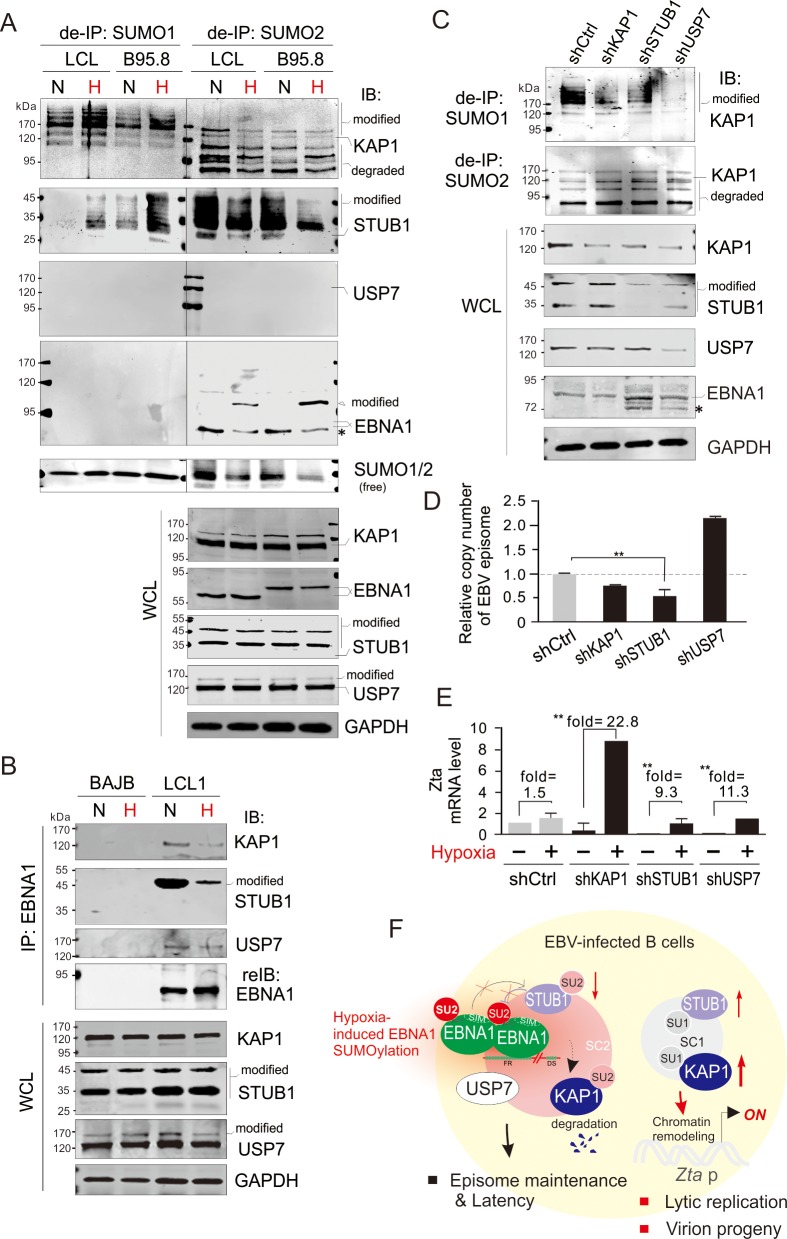Fig 7. Hypoxia induces the dissociation of EBNA1 with STUB1, KAP1, and USP7 for reactivation of EBV lytic replication.
(A) Hypoxia induces SUMO2-modification of EBNA1 and SUMO1-modification of both STUB1 and KAP1. Whole cell lysates (WCL) of the EBV-infected B lymphoma cells B95.8 and LCL1 treated with 21% (N) or 0.2% (H) oxygen for 48 h, were individually subjected to directly IB or de-IP with anti-SUMO1/2 antibodies followed by immunoblotting as indicated in the figure. The asterisk denotes an uncharacterized protein band of EBNA1. (B) Hypoxia reduces the association of EBNA1 with STUB1, KAP1, and USP7. The EBV-infected LCL1 and uninfected BJAB cells were treated with 21% (N) or 0.2% (H) oxygen for 48 h, respectively. WCL were individually subjected to IP with anti-EBNA1 antibody with the antibodies indicated in the figure. (C) STUB1 or USP7 knockdown reduces KAP1 expression and its SUMO1 modification. WCL of EBV-infected LCL1 cells with KAP1, STUB1 or USP7 knockdown were individually subjected to directly IB or de-IP with anti-SUMO1/2 antibodies followed by immunoblotting as indicated in the figure. The luciferase knockdown (shCtrl) was used as control. The asterisk denotes an uncharacterized protein band of EBNA1. (D) STUB1 knockdown significantly reduces the DNA copy number of EBV episome in latency. The episome DNA of EBV-infected LCL1 cells with STUB1, KAP1, USP7, or control knockdown from panel C were subjected to quantitative PCR analysis. The relative copy number of EBV episome is shown by comparison to the luciferase control knockdown. The asterisk indicates a significant difference after duplicate experiments. (E) STUB1 knockdown enhances the sensitivity of EBV lytic reactivation by hypoxia. The EBV-infected LCL1 cells with STUB1, KAP1, USP7 or luciferase control knockdown were individually subjected to treatments with 21% (N) or 0.2% (H) oxygen for 48 h. The relative levels of Zta mRNA transcripts in the cells with or without hypoxia treatment were quantified and are shown. (F) Schematic presents the role of EBNA1SIM-mediated SUMOylated proteins on the maintenance of EBV latency and lytic reactivation in response to hypoxic stress. The effect of SUMO2 modification of EBNA1 induced by hypoxia, and in turn dissociation of EBNA1 with STUB1, KAP1 and USP7, and increase of SUMO1 modification of both STUB1 and KAP1 for reactivation of EBV lytic replication is highlighted in red. The SUMO1- and SUMO2-modified protein complex (SC1 and SC2) is shown in gray and pink.

